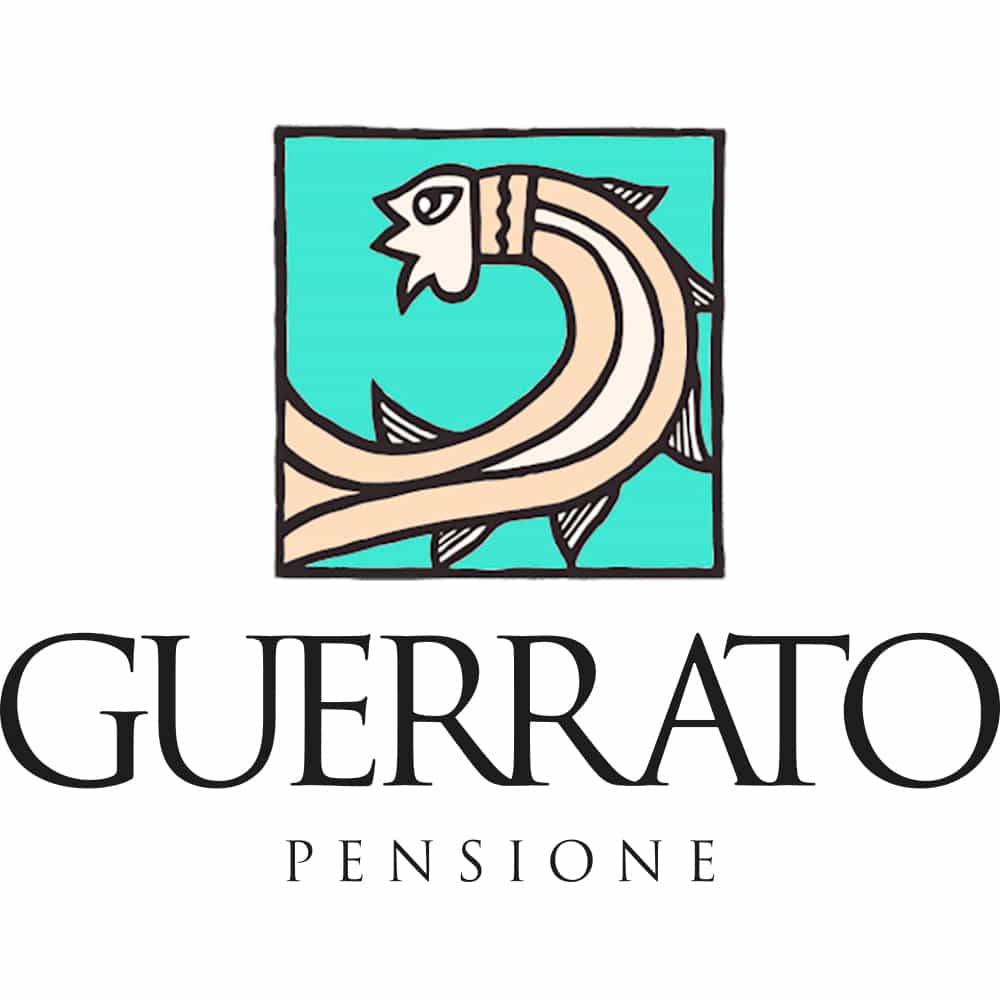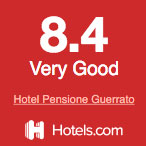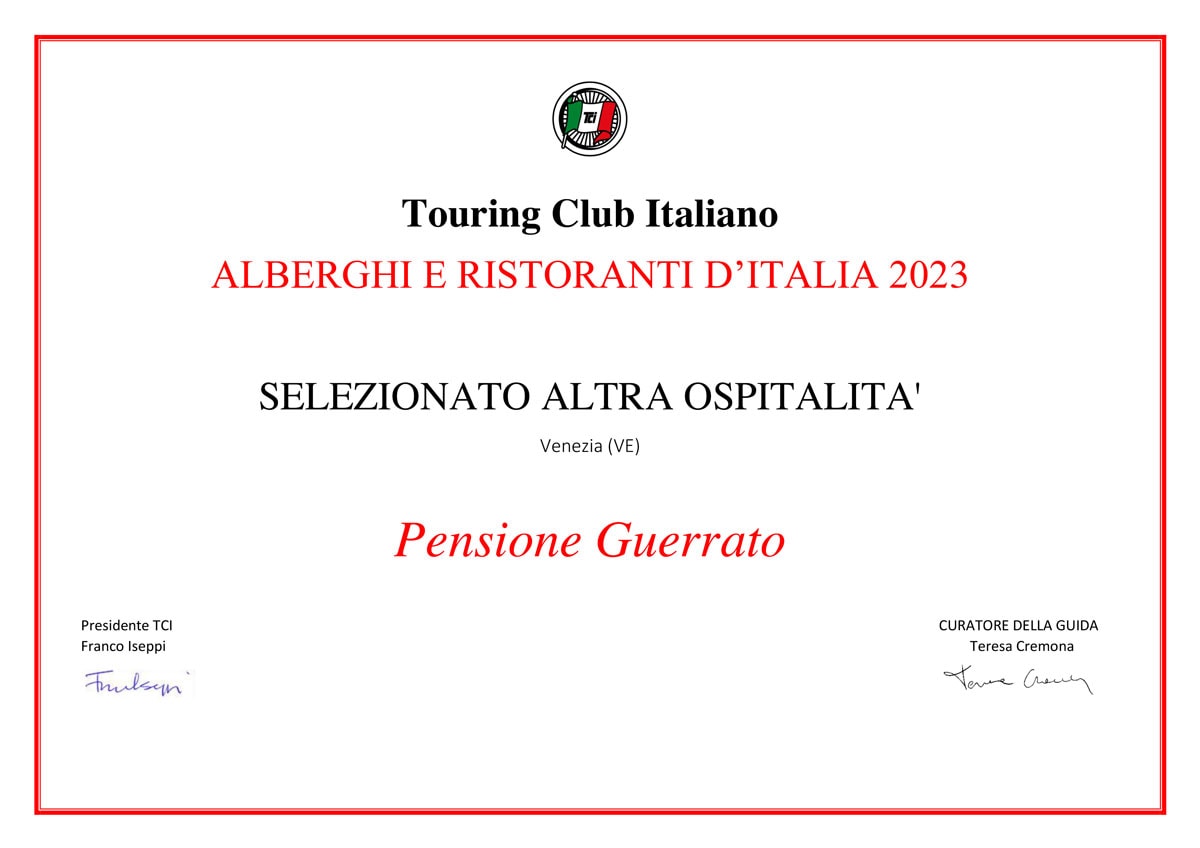A hotel in an ancient Venetian Palace
The Pensione Guerrato is situated in an ancient palace built in 1227. The palace was donated to the nuns of San Lorenzo and its rooms were, at least until 1381, rented to merchants staying in Venice and to the Venetians too.
The palace was in fact used as ‘osteria’ (a sort of modern inn/tavern) known as ‘Della Scimmia’ (of the Monkey). In 1513 a terrifying fire burned the ‘osteria’ just after the nuns of San Lorenzo had restored the palace. The palace, and the inn, didn’t loose its reputation of being a hotel at least not until 1713 when, according to chronicles, the ‘osto’, the manager of the inn, also lived there.
A Venetian historian, Giuseppe Tassini, relates in his Curiosità veneziane (Curiosities of Venice) the history of the narrow ‘calle’ or street to the one where the Pensione Guerrato is situated, giving us information on the palace where tourists even today are given hospitality in Venice:
"Monkey’ street/alley also known as ‘Sword’ street, is located at Rialto near the major fish market (Pescheria Grande). It was found that the street carries this name since 1498. The street name originates from another tavern which used as its sign post or as its symbol, a monkey. This building was donated to the nuns of San Lorenzo (St Lawrence) by Giovanni Venier, as notified in legal documents of Petro Bonvicini (either a priest or notary) dating back to 5 September 1227. As of 27 February 1381, the nuns rented out the building as a tavern displaying the image of the ‘monkey’.
This same building referred to by Sanudo in ‘Diari’ narrates a terrible fire in 1513 destroyed the ‘Monkey’ tavern and that; "… the nuns from San Lorenzo had provided the building in new conditions".This building had a similar function in the past century, while the description of the San Giovanni Elemosinario Parish in 1713 indicates that ‘monkey’ street at Rialto, was a building that the nuns of San Lorenzo paid rent to the tavern owner, Simone Moscaroni. Apparently on this street, there was a tavern with the sign post/symbol of the ‘sword’, which also was the name of the street adjacent/parallel to this tavern which was in front of the Rio delle Beccherie (Butcher’s canal)."














